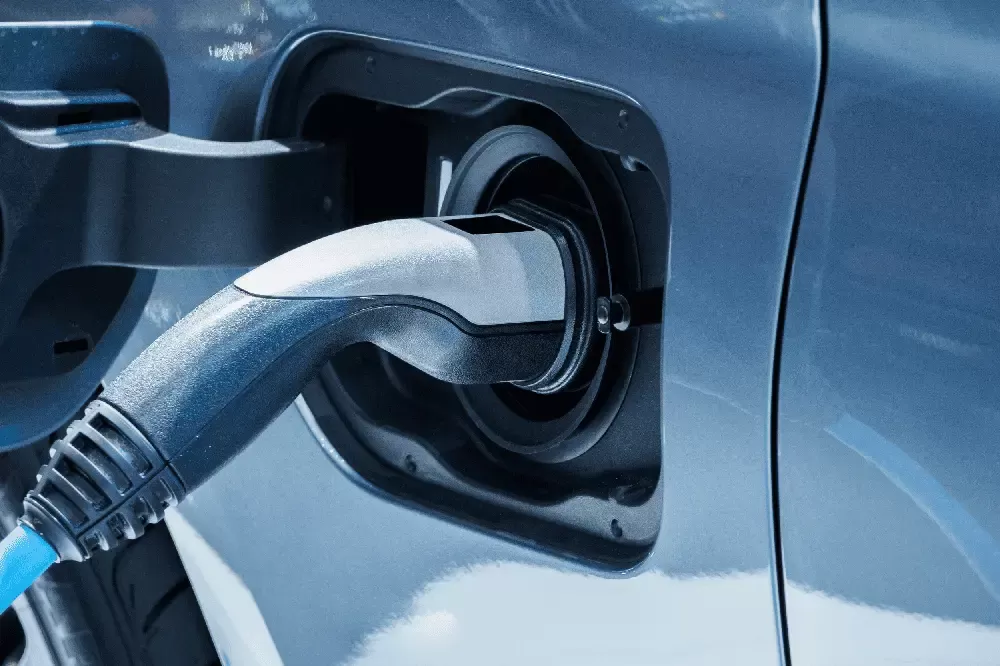Notifications

9 minutes, 39 seconds
-36 Views 0 Comments 0 Likes 0 Reviews

As electric vehicles (EVs) become increasingly central to the global transition towards sustainable transportation, ensuring a smooth, efficient, and secure charging experience is essential. The ISO 15118 standard, which enables two-way communication between EVs and their charging stations, plays a crucial role in achieving this goal. Also known as the "Vehicle-to-Grid Communication Interface," ISO 15118 supports smart charging features, such as "Plug & Charge," making the entire charging process more user-friendly. This article delves into the significance of ISO 15118, its role in accelerating EV adoption, its security features, and its potential impact on the future of electric mobility.
ISO 15118 is an international standard that defines a Vehicle-to-Grid (V2G) communication interface, specifying the protocol for two-way digital communication between EVs and charging stations. The primary objective of this standard is to provide a seamless, user-friendly, and secure experience for both EV owners and charging infrastructure operators. Essentially, ISO 15118 enables vehicles and charging stations to exchange critical information for optimized charging and even energy discharging.
A standout feature of ISO 15118 is its Plug & Charge capability, designed to make EV charging as straightforward as refueling a conventional gasoline vehicle. With Plug & Charge, drivers simply plug in the charging cable, and the system automatically authenticates the driver, determines the appropriate charging settings, and begins the charging process. Once the vehicle is fully charged, the driver can unplug and drive off—no need for cards, apps, or payment details.
ISO 15118 was initiated as a collaborative project between the International Organization for Standardization (ISO) and the International Electrotechnical Commission (IEC) in 2010, aiming to standardize the communication protocols between EVs and charging infrastructure. This standardization ensures interoperability and reliability across different regions and stations.
The first major milestone in ISO 15118's development was the release of the Plug & Charge feature in 2014. Subsequent updates have improved the standard's functionality, security features, and overall scope. The latest version, ISO 15118-20, was published in 2019, with ongoing work on further updates.
While adoption was slow initially, 2021 marked a pivotal moment with automakers like Rivian and Volkswagen integrating ISO 15118 into their EV models. Although adoption is still growing, the introduction of vehicles that support Plug & Charge is a significant step toward realizing the full potential of this standard.
One of the key barriers to EV adoption has been the perceived inconvenience of charging. Unlike gasoline vehicles, which can be refueled quickly and easily at any gas station, EVs require dedicated charging infrastructure, and drivers must often navigate multiple charging stations, apps, and payment methods. ISO 15118's Plug & Charge feature aims to remove these hurdles, automating the entire process and making EV charging as simple as—or even simpler than—using traditional fuel.
The importance of ISO 15118 extends beyond user convenience. It plays a crucial role in combating climate change, particularly in the United States, where the transportation sector accounts for approximately 27% of the nation's carbon emissions. The adoption of electric vehicles is one of the most effective strategies for reducing carbon emissions, but for this transition to succeed, the charging experience must be seamless and accessible.
ISO 15118 provides the technological bridge needed to ensure smooth, efficient, and scalable integration of EVs and charging infrastructure. This means no more fumbling with cards or apps, and charging stations can be deployed universally, regardless of vehicle brand, making the experience easier for drivers and infrastructure providers alike.
As EV charging becomes more reliant on digital communication, cybersecurity is a critical concern. Since ISO 15118 involves the exchange of sensitive data between vehicles and charging stations, safeguarding this communication is essential to protect users and infrastructure from potential cyberattacks.
The ISO 15118 standard incorporates several security measures, including cryptographic keys and digital certificates. These technologies ensure that only authorized users can access the charging station, and that the data exchanged between the vehicle and the station remains secure. By embedding cryptographic technologies in both the vehicle and the charging station, the system can authenticate the vehicle, verify its identity, and establish a secure communication channel.
In addition to authentication and encryption, ISO 15118 also secures payment information. The standard allows the vehicle to securely transmit billing data to the charging station without exposing sensitive payment details. This ensures that users can charge their EVs without the risk of fraud or data breaches.
Though ISO 15118’s security features are robust, implementing them can be complex, especially when it comes to certification. Embedding cryptographic keys, managing certificates, and integrating these features into vehicles and charging stations require careful coordination between automakers, charging providers, and certification bodies. However, the emphasis on security is a core strength of ISO 15118, offering both convenience and peace of mind for users.
The future of ISO 15118 looks promising, as more automakers and charging infrastructure providers embrace the standard. While 2021 marked the beginning of widespread adoption, it is expected that by 2025, a significant number of new electric vehicles will come equipped with ISO 15118-compatible systems.
The growing adoption of ISO 15118 will bring several key benefits:
Interoperability
ISO 15118 ensures that EVs and charging stations from different manufacturers can communicate seamlessly, eliminating the need for proprietary systems and apps. As the number of EVs on the road increases, interoperability will be crucial.
Grid Integration
ISO 15118 lays the groundwork for Vehicle-to-Grid (V2G) technology, allowing EVs not only to draw power from the grid but also to return energy. This could revolutionize grid management, with EVs acting as mobile energy storage units to support the grid during peak demand or energy shortages.
Smart Charging
ISO 15118 will enable smart charging features, such as scheduling charging times, adjusting charging speeds based on grid demand, or taking advantage of off-peak electricity rates. This could lead to cost savings for consumers and help balance energy loads on the grid.
Enhanced User Experience
As more vehicles and charging stations adopt ISO 15118, the charging experience will become increasingly seamless. Drivers will no longer need to manage apps or manual payment methods, making the entire process as easy as filling up at a gas station.
ISO 15118 is a vital standard for the electric vehicle industry, playing a key role in making EV charging more accessible, efficient, and secure. The Plug & Charge feature will simplify the charging experience, while the standard’s robust security mechanisms will ensure the safety and privacy of users. As adoption of ISO 15118 continues to grow, the EV charging ecosystem will become more seamless, user-friendly, and secure, paving the way for greater EV adoption worldwide.
In the long term, ISO 15118 will not only make owning and operating an electric vehicle easier but also contribute to the development of a more intelligent, resilient, and sustainable energy grid. With each new update and broader adoption, the vision of a cleaner, greener future for transportation becomes an increasingly achievable reality.Know more about Google SEO Directory
China EV Chargers EV Charger Manufacturer EV Charging Solutions
